- News
- Reviews
- Bikes
- Components
- Bar tape & grips
- Bottom brackets
- Brake & gear cables
- Brake & STI levers
- Brake pads & spares
- Brakes
- Cassettes & freewheels
- Chains
- Chainsets & chainrings
- Derailleurs - front
- Derailleurs - rear
- Forks
- Gear levers & shifters
- Groupsets
- Handlebars & extensions
- Headsets
- Hubs
- Inner tubes
- Pedals
- Quick releases & skewers
- Saddles
- Seatposts
- Stems
- Wheels
- Tyres
- Tubeless valves
- Accessories
- Accessories - misc
- Computer mounts
- Bags
- Bar ends
- Bike bags & cases
- Bottle cages
- Bottles
- Cameras
- Car racks
- Child seats
- Computers
- Glasses
- GPS units
- Helmets
- Lights - front
- Lights - rear
- Lights - sets
- Locks
- Mirrors
- Mudguards
- Racks
- Pumps & CO2 inflators
- Puncture kits
- Reflectives
- Smart watches
- Stands and racks
- Trailers
- Clothing
- Health, fitness and nutrition
- Tools and workshop
- Miscellaneous
- Buyers Guides
- Features
- Forum
- Recommends
- Podcast
review
£2,100.00
VERDICT:
Geometry, looks and durability are hard to fault, but its stiffness on rough surfaces can be uncomfortable
Weight:
10,600g
Contact:
At road.cc every product is thoroughly tested for as long as it takes to get a proper insight into how well it works. Our reviewers are experienced cyclists that we trust to be objective. While we strive to ensure that opinions expressed are backed up by facts, reviews are by their nature an informed opinion, not a definitive verdict. We don't intentionally try to break anything (except locks) but we do try to look for weak points in any design. The overall score is not just an average of the other scores: it reflects both a product's function and value – with value determined by how a product compares with items of similar spec, quality, and price.
What the road.cc scores meanGood scores are more common than bad, because fortunately good products are more common than bad.
- Exceptional
- Excellent
- Very Good
- Good
- Quite good
- Average
- Not so good
- Poor
- Bad
- Appalling
'Dedicated to the gravel world' is how Wilier Triestina describes the Jaroon, the middle model in its on/off-road line-up. But while there are a lot of things to like about this rather handsome, steel-tubed frameset, its harsh ride isn't one of them – especially when you're in the saddle for a few hours on the rocky stuff, particularly gravel.
The whole gravel, adventure, enduro this and that is a very blurry market, and while testing the Jaroon I was also riding three others in this loose genre. The key thing for me is that they need to be fun to ride – exciting and usable both on and off the asphalt.
> Find your nearest dealer here
Ride
If you're buying this style of bike, you're probably planning on a fair bit of your riding time being on rough roads, or off the road altogether, and to be honest this is where the Jaroon is most suited. The longer wheelbase and slacker angles than a road bike make it much easier to handle when the terrain is working against you.
A bit of singletrack through the woods, for instance. Nothing too soft, but mud and leaves are no issue, and if the bike starts to squirm about if you hit something wet or deep it's pretty easy to keep under control – fun in fact, as the bike twitches about beneath you.
Hit the gravel tracks, though, and things aren't quite so good. The Jaroon's steel frame is strong and stiff, made up of a set of double butted chromoly tubes, but there's little feedback getting through to let you know what's going on beneath the tyres. It's so stiff that with all the buzz travelling through the frame, any other 'message' is muffled and confused. Go barrelling into a corner on a loose surface and the Jaroon is way out of line before you know it, and everything becomes a white-knuckle ride.
It's harsh compared with the Fairlight Strael I'm currently testing (review to come) and the Mason Resolution I tested last year. Both of these steel frames offer plenty of feedback, whereas the Jaroon gives nothing back in terms of what is happening under the tyres.
To check this out further, tech ed Dave Arthur and I took to the gravel tracks of Salisbury Plain and the Imber Perimeter Path in Wiltshire for a near four-hour ride, which also included wooded paths and grass bridleways. He was on the Mason Bokeh while I was on the Jaroon, and at the midway point we swapped bikes for a bit.
It was instantly clear to both of us how much harder the Jaroon makes you work to maintain pace and the extra effort needed in terms of steering. The Mason's steering felt light and quick, making it much easier to chuck about than the Wilier, and more controlled when dodging potholes and ruts; you were working with the bike. The Jaroon under the same conditions is a bit of a fight; it feels out of control on loose terrain, somewhere it is designed to thrive.
> Cyclo-cross vs gravel/adventure bikes: what's the difference?
When you're riding on gravel it's a given that it'll move beneath you – that's part of the fun – and with a bike like the GT Grade I reviewed recently, things are still controllable because you know what is happening beneath that 10mm of rubber contact patch. With the Wilier, you are always a second or so behind; it's like a delayed response where you have to react to correct the handling rather than interpreting what is about to happen.
Having to work harder to ride the bike is telling, especially as time goes on. Anything longer than, say, three hours and your whole upper body starts to tire from both the handling and vibration. You can drop the tyre pressures right down to 40psi or so and it helps a little, but nowhere near enough.
Take to the tarmac and the stiffness issues are the same but obviously not quite so jarring, as the surface is much smoother, but to get the performance out of the Kenda Happy Medium tyres you need to whack the pressures up (I had them at around 80psi) to stop them feeling draggy.
The handling isn't as hard work on the road, but there is still quite a bit of vagueness in high speed bends, a combination of the tyres and the lack of feedback from the frame and fork.
One bonus of all this stiffness is that when climbing and accelerating you won't find anything flexing under load, even on those steep off-road climbs when you can really get the power down. Up front it's the same, the stiff fork handling the braking loads of the disc without faff or complaint.
Frame and fork
For a frame that might be used on a long adventure in the back of beyond, steel is always a good option as it can be fixed one way or another by anyone who can wield a torch. It won't look as pretty, mind, as the Wilier is manufactured using internal welding. The weld material is inside the tubes and they are heated from the outside to create the join, leaving just the elegance of the mitred joints on display externally, with a finishing coat of lacquer applied to ward off any corrosion.
The tubes themselves are chromoly and double butted, which means that the wall thicknesses are two different depths: thicker at the ends for stiffness and thinner in the middle to allow some flex.
For all the elegance of its construction, the Jaroon's frame lacks much of the subtle feedback you would expect from a higher end steel bike. It's hard to describe, but the ride just feels exactly the same throughout the bike no matter what your body position, speed or terrain. It's tiny details but something that is noticeable when these variables come into play, especially the shift of bodyweight from sitting to standing for instance.
Up front you get an oversized and tapered head tube to house the internal headset bearings. This, coupled with the stiff fork, has no hassle dealing with braking loads from the disc brake, helped by the provision of a 12mm thru-axle rather than a traditional quick release. You'll need to carry a 5mm hex key with you to remove the wheel, though.
It's the same setup at the rear, which makes wheel and disc alignment noticeably easier.
As befits any bike likely to see all-weather action, the Jaroon will take full mudguards, plus there are mounts for a front and rear rack too if you fancy going for a bit of a trek across a continent or something. There's clearance for up to 42mm tyre widths.
It's rugged too. On the gravel tracks the frame took a good few whacks from large stones and branches and just shrugged them off with barely a scratch. If the lacquer does get chipped it should be easy to touch up, unlike matching a paint colour.
Finishing kit
The Jaroon uses Promax finishing kit throughout and it's decent enough quality, made from aluminium and reasonably lightweight and stiff. The handlebar is flared at the drops, which seems the norm on bikes of this style. It gives loads of clearance for wrists and knees, and having your hands further apart in the drops brings a bit more stability at speed.
The Velo saddle was okay, though swapping this out for one of your favourites could bring a little more in the way of longterm comfort. The seatpost it is fitted to has simple adjustment.
For the gears and brakes, Wilier has chosen SRAM's Rival 1x11 groupset. The single chainring with 44 teeth, paired to the 11-speed 11-42 cassette, gives a large range of gears, though it is quite gappy with some large jumps between them. It's not really noticeable off-road where your cadence changes a fair bit, but on the road, especially into a headwind, it can be a struggle to find a gear that is just right.
For climbing on a loose-surfaced off-road track, the lowest 44x42 combination is near perfect, allowing you to stay seated on the majority of hills. This helps you maintain traction because your bodyweight is over the rear wheel, and it's more efficient, especially if you're going to be taking in a lot of elevation over the course of a ride.
Obviously, with a single chainring setup you don't need a front mech, which is why SRAM's rear derailleur has a clutch mechanism to keep chain tension in check. Even high speed rough descents never saw the chain unship.
Wilier has gone for an external threaded bottom bracket; in my experience these always stand up to wet weather and mud abuse well so it seems a sensible choice.
The brakes are SRAM's hydraulic callipers and levers, which work very well, with a 160mm front and 140mm rear rotor setup. I always find SRAM's are more progressive than Shimano's versions, so are a bit better for off-road use, where Shimano's grabbier approach can see you skid easier.
Heavy braking from 50mph on road saw nothing of any concern show up, and it was great to feel the fork and thru-axles doing their job. On some disc-equipped bikes, braking from massively high speeds can see the quick release struggle as it twists in the dropouts because of the loads of a single-sided disc – but no such issues here. The Jaroon's frame is set up for the flat-mount disc brake standard, so it's aesthetically pleasing too.
Wheels and tyres
The wheels are Wilier's own and are super-strong. The gravel test roads on Salisbury Plain were brutal, being designed for tanks and army traffic to get around the firing range, and over five weeks of testing the Jaroon took a real pounding on the unforgiving rocks and potholes, but the wheels stayed true.
The rims use an asymmetrical shape – obviously designed for rear wheel use but used front and rear. The rim is drilled off centre, which on the rear wheel means that spokes can have more dishing on the drive side, which in turns creates a stronger wheel.
The bearings felt smooth and, again, considering the terrain and weather conditions, they have sterling durability.
The tyres are Kenda's Happy Medium, and that name sums them up rather well: they could tackle pretty much any terrain other than really deep mud. They were way better than I expected pretty much everywhere. Puncture proofing was okay, although they are quite thin on the tread so small thorns could get through and I did pick up a couple of flats. They were a bugger to fit and remove, too, being very tight.
Value
Having a flick through some of the other gravel and adventure bikes tested on road.cc over the past few months, the Jaroon does look a little on the pricey side, especially against something like The Light Blue Robinson, which costs £1,399.99 with the same groupset, a Reynolds 725 steel frame and similar weight. Okay, it has a chromoly fork and mechanical disc brakes, but it's £800 cheaper.
> Buyer's Guide to gravel and adventure bikes
Or there is the similarly priced Raleigh Roker Pro. It isn't quite as full-on adventure-ready as the Wilier, but it is running the same finishing kit with a carbon fibre frameset and a whopping 2kg weight loss compared to the Jaroon.
Conclusion
For a bike 'dedicated to the gravel world' it's odd that that's where the Jaroon seems most wanting. Stick to tarmac or smoother trails and, on the whole, the Wilier has good geometry for getting your bodyweight right on varying terrains and it is very simple to knock out the miles. If things turn technical, though, you're in for a tough day.
Which leaves me thinking that, overall, although the Wilier looks very 'top end', with its raw finish and minimalistic decals, and the riding position is great, it's just too stiff to provide an enjoyable ride on the terrain it's designed for. At this price, it has too many flaws to be considered a good investment.
Verdict
Geometry, looks and durability are hard to fault, but its stiffness on rough surfaces can be uncomfortable
road.cc test report
Make and model: Wilier Jaroon
Size tested: Medium
About the bike
State the frame and fork material and method of construction. List the components used to build up the bike.
Drivetrain - SRAM RIVAL, 1X11
Frame - CHRO-MOLY STEEL, FLAT MOUNT, 12 MM THRU AXLE
Fork - CARBON MONOCOQUE, 12 MM THRU AXLE
Handlebar - PROMAX FLAT BAR 12° FLARE OUT
Stem - PROMAX DA-250
Headset - RITCHEY COMP TAPERED
Shifters - SRAM RIVAL, HYDRO 1X11
Brakes - SRAM RIVAL DISC, FLAT MOUNT
Rotors - SRAM CENTERLINE 6 BLOTS, 160MM + 140MM
Rear derailleur - SRAM RIVAL, 1X11
Crankset - SRAM S350 44T
Cassette - SRAM POWERGLIDE 1130 11/42T
Chain - SRAM PC1110
Wheelset - WILIER TRIESTINA DD28 THRU-AXLE
Tires - KENDA HAPPY MEDIUM 700X40
Saddle - VELO, BLACK
Seatpost - PROMAX SP-255
Tell us what the bike is for, and who it's aimed at. What do the manufacturers say about it? How does that compare to your own feelings about the bike?
Wilier says: "The Jaroon is the new steel frame dedicated to the gravel world. A high-quality frame, welded with a special technique that hides all welding material inside, making the frame appear clean, and the seams flawless. Technologically speaking, the frame has a rear through axle, differentiated diameter head tube, 27.2 mm diameter seat-post for greater comfort, flat mount disc brake system, racing handlebar with 12° flare-out and monocoque all-carbon fork with through axle. For maximum versatility, the frame has been designed to mount mudguards and front and rear racks and frame and front fork tire clearance is up to 42mm."
The Jaroon has everything it needs in terms of fixtures and fittings for a gravel or adventure bike but the frame makes you feel like you have to work hard and could do with being more comfortable.
Frame and fork
Overall rating for frame and fork
6/10
Tell us about the build quality and finish of the frame and fork?
The internal welding and lacquered natural finish makes for a lovely looking frame but the tubing brings nothing to the actual ride quality, plus the fork is way too stiff.
Tell us about the materials used in the frame and fork?
The tubing is double butted chromoly steel while the fork is a full carbon fibre construction.
Tell us about the geometry of the frame and fork?
The Jaroon has a slightly slacker head tube angle than the Wilier road geometry; combined with the resulting longer wheelbase and lower BB drop, this results in a more stable ride when things get rough. The Jaroon also has a longer head tube for a more relaxed seating position and a 27.2mm seat tube for greater comfort.
The geometry chart is here http://www.wilier.com/en/products/int/gravel/jaroon
How was the bike in terms of height and reach? How did it compare to other bikes of the same stated size?
In the medium size the stack is 576mm with reach 380. (Stack and reach are the vertical and horizontal measurements from the centre of the bottom bracket to the top of the head tube.) It's in the same ball park as other bikes of this style but possibly a touch taller due to the extended head tube.
Riding the bike
Was the bike comfortable to ride? Tell us how you felt about the ride quality.
It was okay on smooth roads, but on hardpacked gravel tracks or potholed lanes your upper body especially tires quickly because of how stiff the frameset is.
Did the bike feel stiff in the right places? Did any part of the bike feel too stiff or too flexible?
See above. It's impressive in terms of performance though.
How did the bike transfer power? Did it feel efficient?
Short hard bursts saw the Jaroon deliver the power well.
Was there any toe-clip overlap with the front wheel? If so, was it a problem?
Yes and occasionally off-road if things were technical.
How would you describe the steering? Was it lively, neutral or unresponsive? Neutral.
Tell us some more about the handling. How did the bike feel overall? Did it do particular things well or badly?
The Jaroon felt more at home off road than it did on, especially when the going was soft as you seemed to be able to feel more of what the bike was up to. On the road there was a lot of vibration coming through the frame muddling everything up.
Which components had the most effect (good or bad) on the bike's comfort? would you recommend any changes?
There was little any component could do to react against the frame's limited comfort.
Which components had the most effect (good or bad) on the bike's stiffness? would you recommend any changes?
If ultimate stiffness is your goal the Jaroon won't disappoint.
Which components had the most effect (good or bad) on the bike's efficiency? would you recommend any changes?
SRAM's hydro disc brakes offer good stopping power and a really progressive nature to how it's delivered, which means braking in the wet and dry can be left late on an 'if you need to' basis, keeping average speeds up.
Rate the bike for efficiency of power transfer:
8/10
Rate the bike for acceleration:
8/10
Rate the bike for sprinting:
7/10
Rate the bike for high speed stability:
6/10
Rate the bike for cruising speed stability:
8/10
Rate the bike for low speed stability:
8/10
Rate the bike for flat cornering:
8/10
Rate the bike for cornering on descents:
7/10
Rate the bike for climbing:
8/10
The drivetrain
Rate the drivetrain for performance:
8/10
Rate the drivetrain for durability:
8/10
Rate the drivetrain for weight:
8/10
Rate the drivetrain for value:
8/10
Tell us some more about the drivetrain. Anything you particularly did or didn't like? Any components which didn't work well together?
The 1 x 11 Rival group works well off road, though the gaps between gears are a little large when on the road. Performance is good, with solid shifting even when covered in mud and road spray.
Wheels and tyres
Rate the wheels for performance:
8/10
Rate the wheels for durability:
8/10
Rate the wheels for weight:
8/10
Rate the wheels for comfort:
7/10
Tell us some more about the wheels.Did they work well in the conditions you encountered? Would you change the wheels? If so, what for?
The Wilier branded wheels are strong and robust. They took some really hard knocks from the potholes and rocks on the gravel trails without going out of true.
Rate the tyres for performance:
7/10
Rate the tyres for durability:
7/10
Rate the tyres for weight:
7/10
Rate the tyres for comfort:
8/10
Rate the tyres for value:
8/10
Tell us some more about the tyres. Did they work well in the conditions you encountered? Would you change the tyres? If so, what for?
The Kenda Happy Mediums are exactly that, good all-rounders on and off the road. They grip surprisingly well even in soft mud or chalk, while still feeling reasonably quick on the tarmac. Puncture resistance is so-so though, with quite a thin carcass.
Controls
Rate the controls for performance:
8/10
Rate the controls for durability:
8/10
Rate the controls for weight:
7/10
Rate the controls for comfort:
7/10
Rate the controls for value:
7/10
Tell us some more about the controls. Any particularly good or bad components? How would the controls work for larger or smaller riders?
The Promax finishing kit is okay stuff, nothing flash for a £2,200 bike.
Your summary
Did you enjoy riding the bike? Yes and no.
Would you consider buying the bike? No
Would you recommend the bike to a friend? A tough one; it's got a lot going for it if you can live with the stiffness, so yeah probably.
Rate the bike overall for performance:
7/10
Rate the bike overall for value:
6/10
Use this box to explain your score
There is a lot to like about the Wilier Jaroon. The riding position is good, the components are well specced, and if the terrain isn't too rough it is quite a pleasure to ride. Unfortunately, the frame itself just lacks the finesse and steel feel I'd expect from a bike at this price.
The tubing is too stiff for what it is designed for, not giving enough feedback.
About the tester
Age: 38
I usually ride: This month's test bike My best bike is: Kinesis Aithien
I've been riding for: 10-20 years I ride: Every day I would class myself as: Expert
I regularly do the following types of riding: time trialling, commuting, club rides, sportives, fixed/singlespeed
Since writing his first bike review for road.cc back in early 2009 senior product reviewer Stu has tested more than a thousand pieces of kit, and hundreds of bikes.
With an HND in mechanical engineering and previous roles as a CNC programmer/machinist, draughtsman and development engineer (working in new product design) Stu understands what it takes to bring a product to market. A mix of that knowledge combined with his love of road and gravel cycling puts him in the ideal position to put the latest kit through its paces.
He first made the switch to road cycling in 1999, primarily for fitness, but it didn’t take long for his competitive side to take over which led to around ten years as a time triallist and some pretty decent results. These days though riding is more about escapism, keeping the weight off and just enjoying the fact that he gets to ride the latest technology as part of his day job.
Latest Comments
- Nagai74 2 sec ago
It's a DLO to those in the trade.
- chrisonabike 15 min 34 sec ago
Surely as a former bridleway these should be equid-based e.g. "hoof-depth" / "up to the fetlock" / "approaching hock/knee"?...
- Tom_77 39 min 22 sec ago
Cars keep getting wider and wider, but it's those damn cyclists with their wide handlebars that are the real problem. ref
- bikes 1 hour 36 min ago
"it's almost entirely from recycled composite materials". What percentage of the carbon frame is made from recycled carbon?
- David9694 5 hours 35 min ago
Motorist Mike demands 40p back after overcharged on new £11m 'prison' car park...
- PRSboy 18 hours 40 min ago
I have two aero bikes- an Argon18 Nitrogen and an Orro Venturi. I love the way they feel on the road. I also like the style of the deeper section...
- Rendel Harris 1 day 2 hours ago
They have here: results at 14.40. The aero bike was roughly fifteen seconds faster than a climbing bike on a descent of around 6 km, so about 3km/h...
- wtjs 1 day 2 hours ago
As I've also placed here the nutter Audi and white van drivers, I've decided to give those no-nonsense keep-the-country-moving BMW drivers a list...
- polainm 1 day 3 hours ago
100% this. Policing mentality is formed by social 'norms', and the cyclist witchhunting across social media is the UK norm. Close passing a person...
- David9694 1 day 4 hours ago
That's a clear 2 points awarded there, but I guess as there's now a 25% tariff you'll only get 1.5





































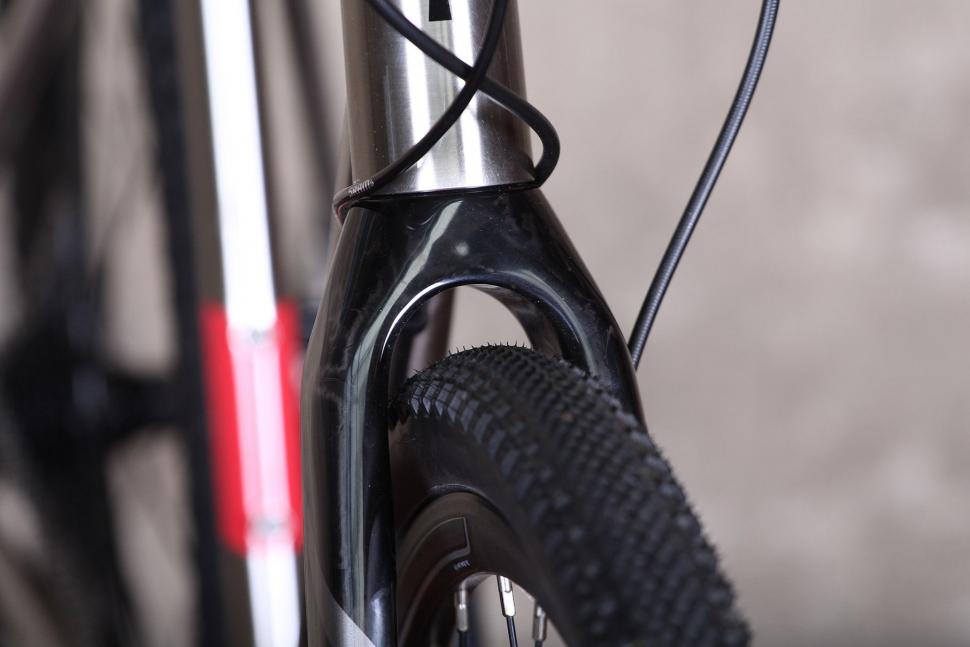

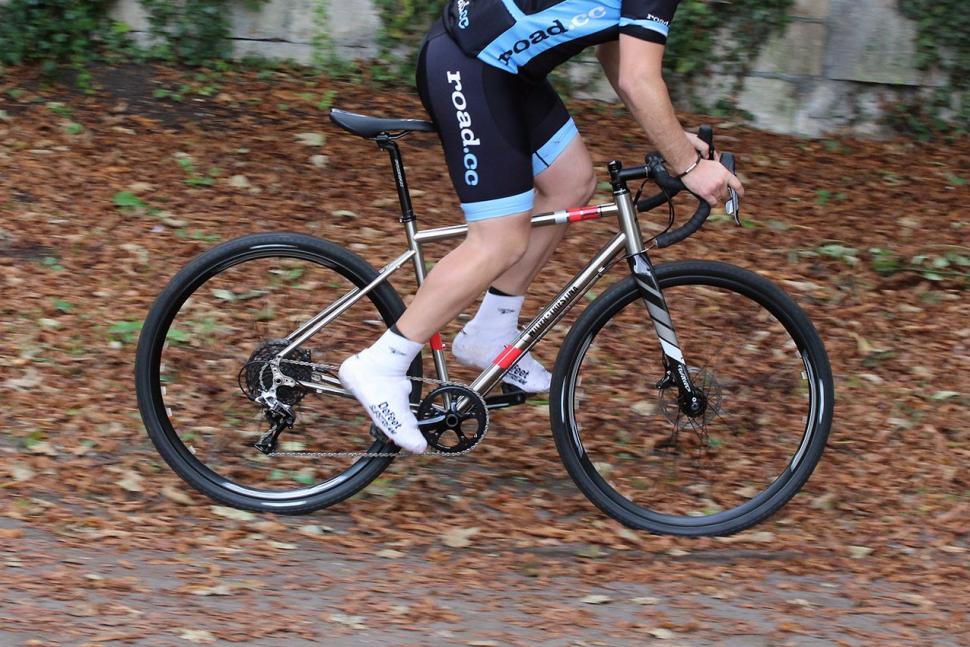
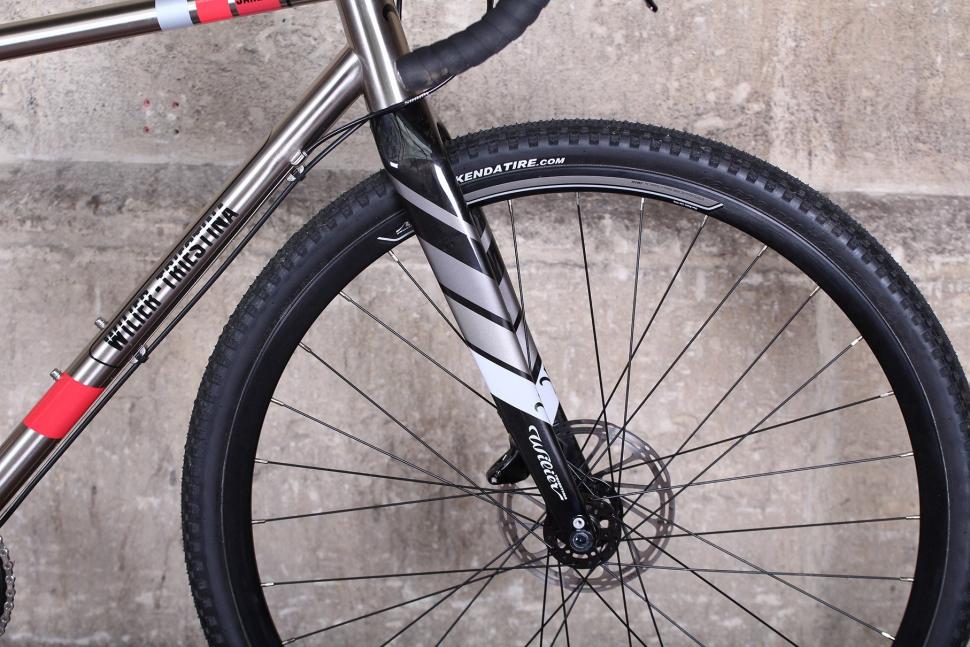
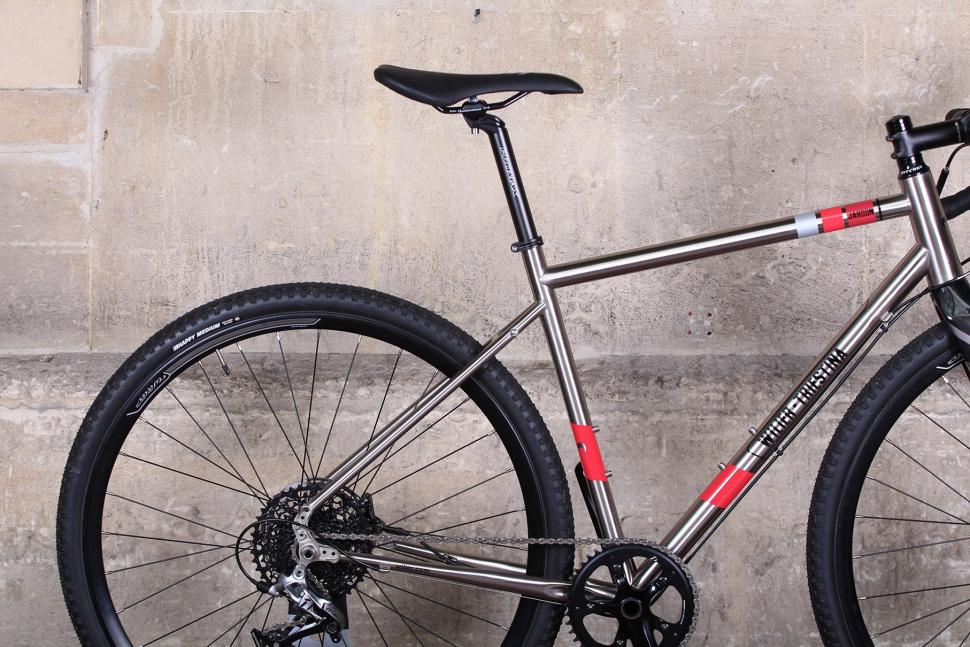


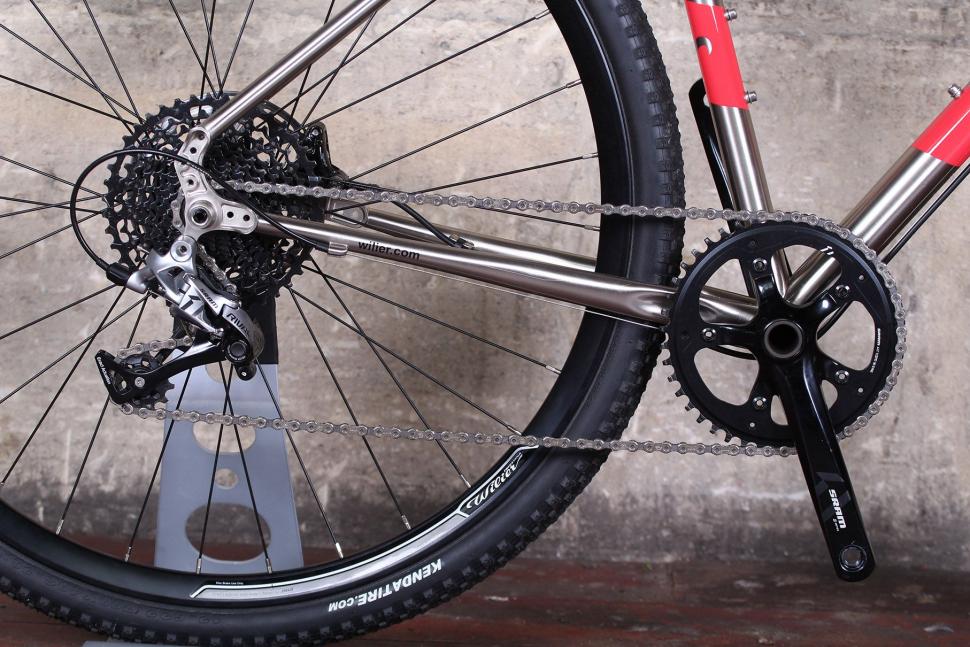
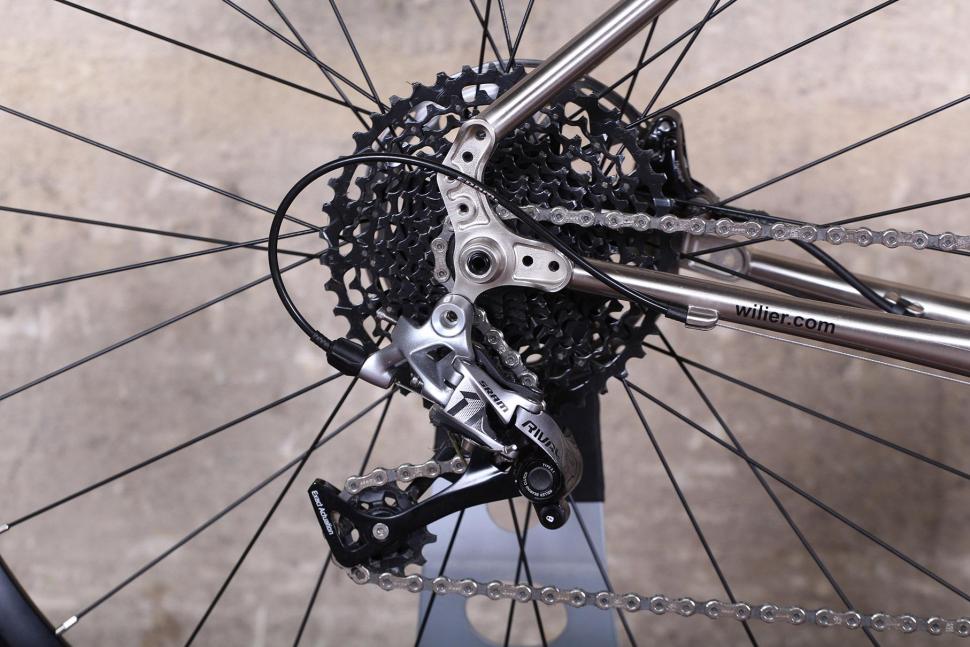
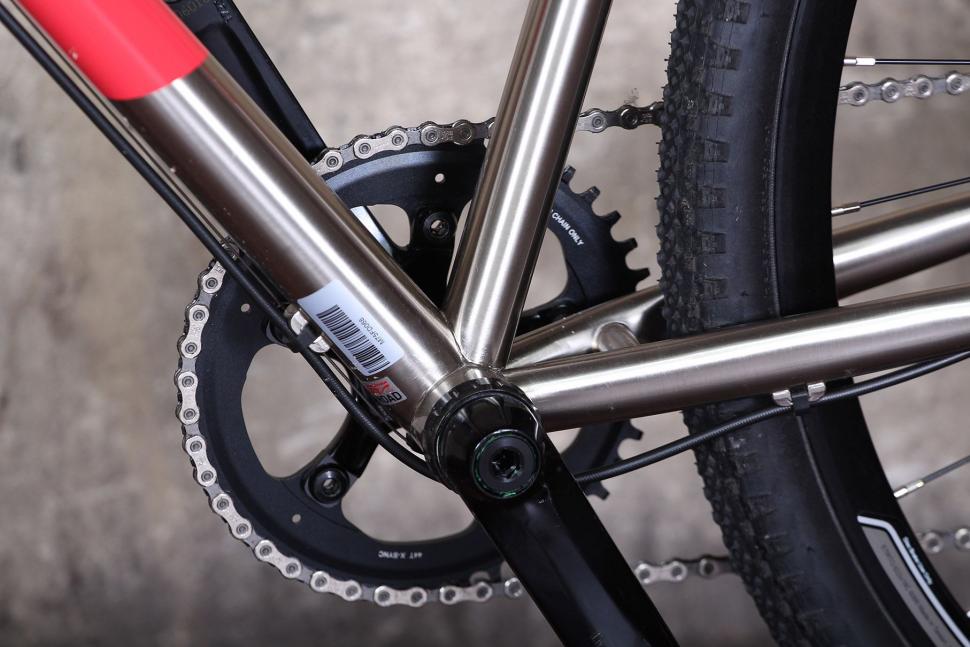
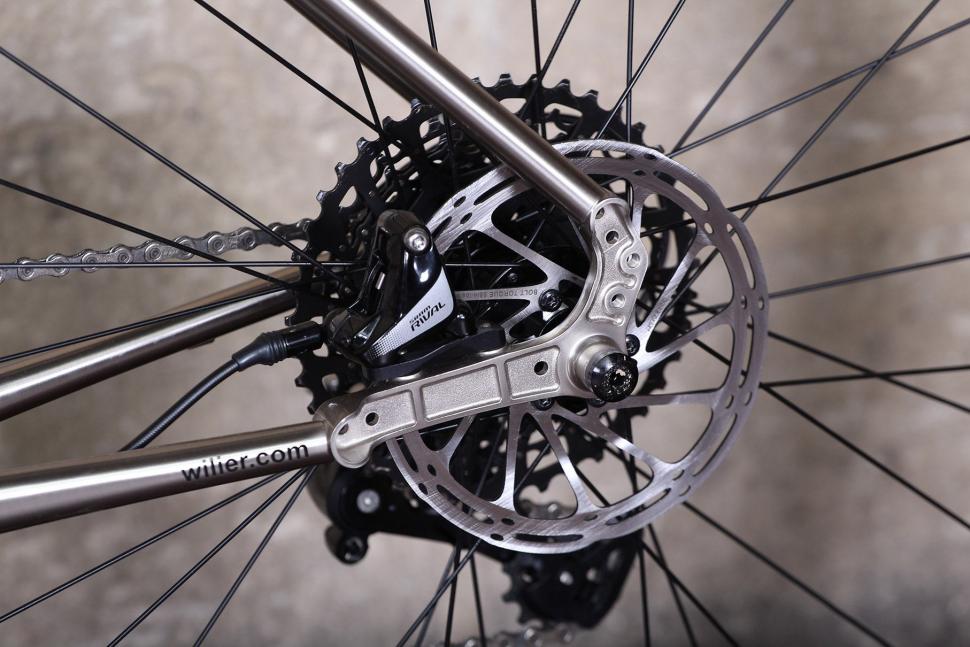
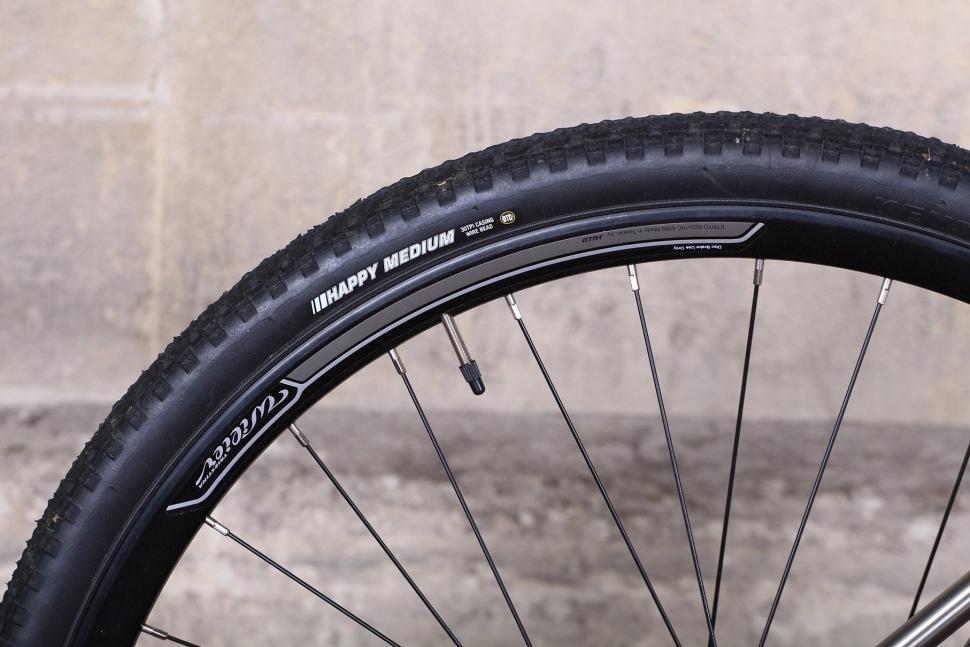
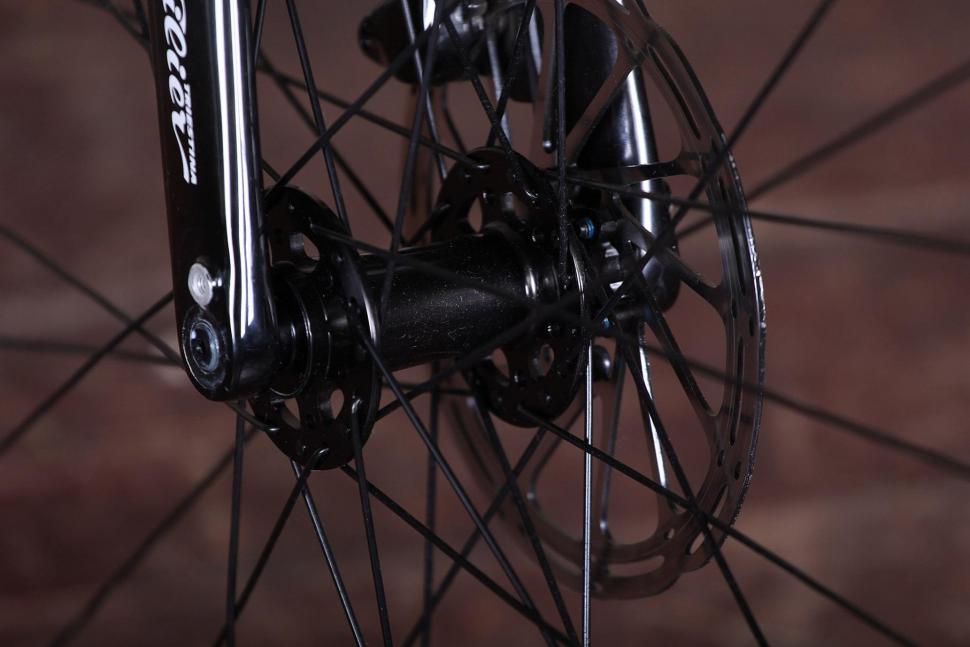


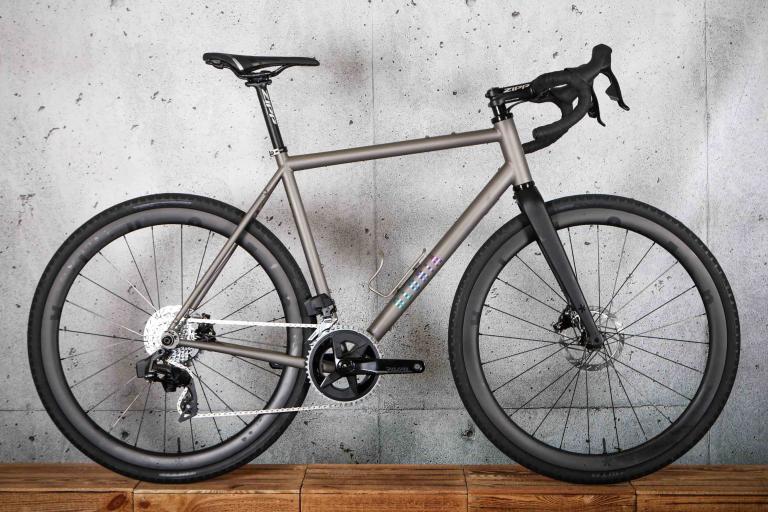
Add new comment
5 comments
It may sound pernickety, but would it be too much to ask that you mention tyre pressures tested at when reviewing this 'genre' of bike or any bike for that matter?
Glad I didn't buy one; the price has recently has recently taken a £100 hike and hardly any of the Dealers I spoke to were interested in stocking it. The best they could offer was getting one in on the strength of a 10% non-returnable deposit.
It does look nice though however plenty of other bikes of this genre to choose from
If nothing else, it looks the nuts.
You rang ?
?
Awaits baffled responses from the "alloy is harsh, steel is springy, ALWAYS" crowd.